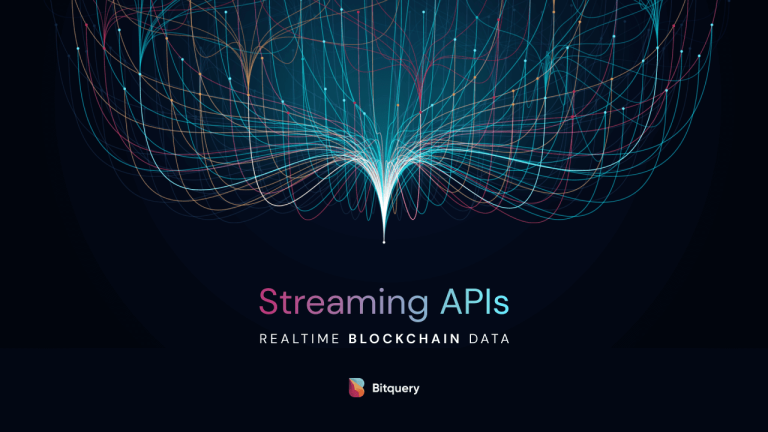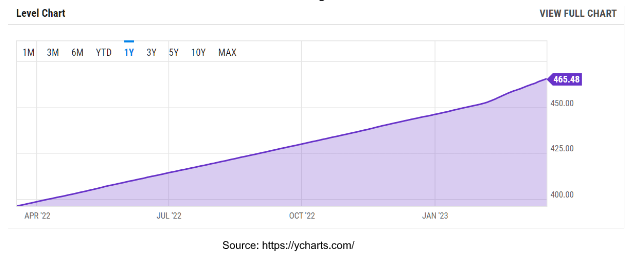
Bitquery launched its Streaming API in early March, giving users to access blockchain data in real time.
With Bitquery’s APIs, Web3 builders have had access to extensive data from over 40+ blockchain networks. As the demand for blockchain data continues to grow, Bitquery has been at the forefront of providing reliable and comprehensive data to its users. The Streaming API is the latest addition to Bitquery’s suite of APIs, offering a fast and efficient way to access real-time blockchain data.
With a free developer account, you can easily create a query with built-in GraphQL IDE. As you run your first query, you can refer to the schema in the same tab or find your doubts answered in the documentation.
Challenges in Accessing Blockchain Data
While web3 has the potential to revolutionize various industries, it comes with its challenges too.
At the time of writing, the Bitcoin block size towers at a whopping 465 GB, expanding at a mind-boggling rate of 124%. The Ethereum blockchain, on the other hand, boasts an astronomical block size of 879.55 GB. Capturing and making accessible the huge amount of data stored on a blockchain network is a challenge in itself.
What’s more, the data has to be cleaned and stored in a structured, standardized format for it to be useful for all applications. Do not forget the thousands of engineering man-hours required to arrive at this stage.
Without indexing, developers would need to search through an entire blockchain network to find the specific data they need, which would be time-consuming and inefficient.
This is why it is important to have a system for filtering or locating the data, and here comes into play the ability to query blockchain data. Querying blockchain data means asking specific questions or making specific requests for data that is stored on the blockchain network without having to sift through large amounts of irrelevant information.
Bitquery’s APIs provide developers with the ability to query blockchain data quickly and easily, using a user-friendly explorer and a GraphQL interface.
What is the Need for Blockchain data?
By providing real-time data about the blockchain including transactions and trades, Bitquery is empowering individuals to make informed decisions and take advantage of opportunities in the blockchain space. This is particularly important for individuals and small businesses who may not have the resources to access blockchain data as useful information.
Bitquery’s Streaming API is also enabling developers to create decentralized applications (DApps) that provide financial services on the blockchain, such as lending and borrowing platforms, further expanding financial inclusion. Ultimately, this level of transparency and access to information helps to drive innovation and growth in the blockchain space.
Some common use cases of Bitquery Streaming APIs
There are a lot of things happening all the time on blockchain networks, but what if you only care about specific events, such as swap activity or smart contract creation? Bitquery has a solution for that too!
Bitquery’s Streaming API allows you to “subscribe” or listen to specific types of events happening on the blockchain in real time. This way, you don’t have to keep checking for updates – you can just ask the Streaming API to let you know when something happens.
DEX Trading
Early adopters of Bitquery’s Streaming API are leveraging its real-time data capabilities to track and analyze macroeconomic events in the crypto market including decentralized exchange (DEX) trades.
For developers building trading bots and algorithmic trading platforms, the DEX Trades API provides information on price, volume, and the latest trades for specific tokens on various DEXs like Uniswap, PancakeSwap and Bitcoin.com’s Verse DEX.
Compliance and Investigation
If you work in a crypto exchange’s compliance team, you can use Bitquery’s Streaming API to keep a close eye on your transactions and quickly catch any shady or illegal activities. These APIs let you filter transactions based on things like the amount, and recipient address. And the best part? You can set up webhooks to monitor different wallets and get real-time alerts whenever something fishy is going on. So you can sit back, relax, and let the Bitquery API do the heavy lifting for you!
Tracking Whales and Institutional Accounts
News such as “Shiba Inu moves X% today as a whale has moved a massive SHIB amount worth so many million” can signal significant changes in market sentiment and impact the value of an asset. Create your own trackers to track the movement of assets you care about.
NFT Transfers & Trades
Staying up to date with the latest NFT transfers is crucial for anyone interested in the NFT market. Bitquery’s NFT API is a powerful tool that enables developers to fetch real-time metadata, ownership data, transfer data, and pricing information for NFTs on various blockchain networks. With this API, developers can easily build applications that interact with NFTs and provide users with up-to-date information about their favourite NFTs.
Want to see how the Streaming API can be visualised in real-time? Check out the API Visual Demo.
Blockchain Data in the Cloud
Bitquery’s blockchain data is not just limited to GraphQL interfaces. It’s now possible to access this data through Amazon S3, and Bitquery plans to expand this service to cover all major cloud data providers. This means developers will have easy access to all the indexed blockchain data they need, all in one place.
Need help getting started? Reach out to the Bitquery team on telegram, their official community or discord.
via Bitcoin.com


0 comments:
Post a Comment